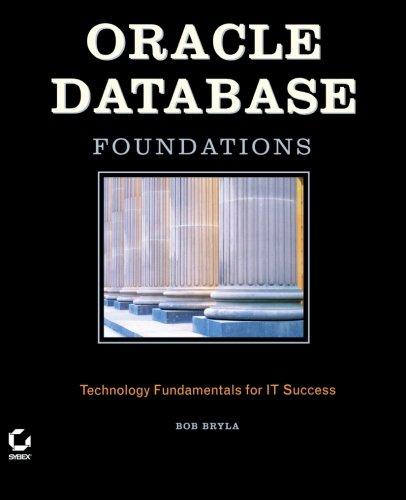Answered step by step
Verified Expert Solution
Question
1 Approved Answer
Step 1 : Create a set of requirements that will be used to createthe ER Diagram in Step 2 . Step 2 : Create an
Step : Create a set of requirements that will be used to createthe ER Diagram in Step Step : Create an ER diagram using ERDPlus that contains atleast five entities and at least four binary relationships. At leastone of the relationships should be many to many. Show allattributes of all entities.Step : Map the ER diagram you created in Step into arelational schema containing the relations with their attributesand the referential integrity constraints ie arrows pointingfrom foreign keys into their sources Use ERDPlus to draw themapped relational schema.Step : Create a set of requirementsLet's consider a scenario related to softball team management. The requirements might include: Entities: Player, Team, Coach, Game, and Position. Attributes: Player PlayerID FirstName, LastName, DateOfBirth, JerseyNumber, etc. Team TeamID TeamName, EstablishedYear, etc. Coach CoachID FirstName, LastName, ContactInfo, etc. Game GameID Date, Opponent, Venue, etc. Position PositionID PositionName, Description, etc. Relationships: Players belong to Teams. Teams have Coaches. Players play in Games. Players can have multiple Positions, and Positions can be held by multiple Players manytomany relationshipStep : Create an ER diagram using ERDPlusUsing ERDPlus or a similar tool, create an ER diagram based on the provided requirements. Ensure that the diagram includes at least five entities Player Team, Coach, Game, and Position and at least four binary relationships. One of the relationships should be manytomany eg Players and PositionsStep : Map the ER diagram to a relational schemaHere is a simplified example of how you might map the entities and relationships to a relational schema: Player PlayerID PK FirstName, LastName, DateOfBirth, JerseyNumber, TeamID FK references Team Team TeamID PK TeamName, EstablishedYear, CoachID FK references Coach Coach CoachID PK FirstName, LastName, ContactInfo Game GameID PK Date, Opponent, Venue Position PositionID PK PositionName, DescriptionAdditionally for the manytomany relationship between Players and Positions, you might need a junction table: PlayerPosition PlayerID FK references Player, PositionID FK references PositionIn this mapping, foreign key constraints are represented by the FK references, and the arrows pointing from foreign keys into their sources indicate referential integrity constraints.Can you create my Ed diagram and map it into a rational schema steps and using my data I came up with?
Step by Step Solution
There are 3 Steps involved in it
Step: 1

Get Instant Access to Expert-Tailored Solutions
See step-by-step solutions with expert insights and AI powered tools for academic success
Step: 2

Step: 3

Ace Your Homework with AI
Get the answers you need in no time with our AI-driven, step-by-step assistance
Get Started


